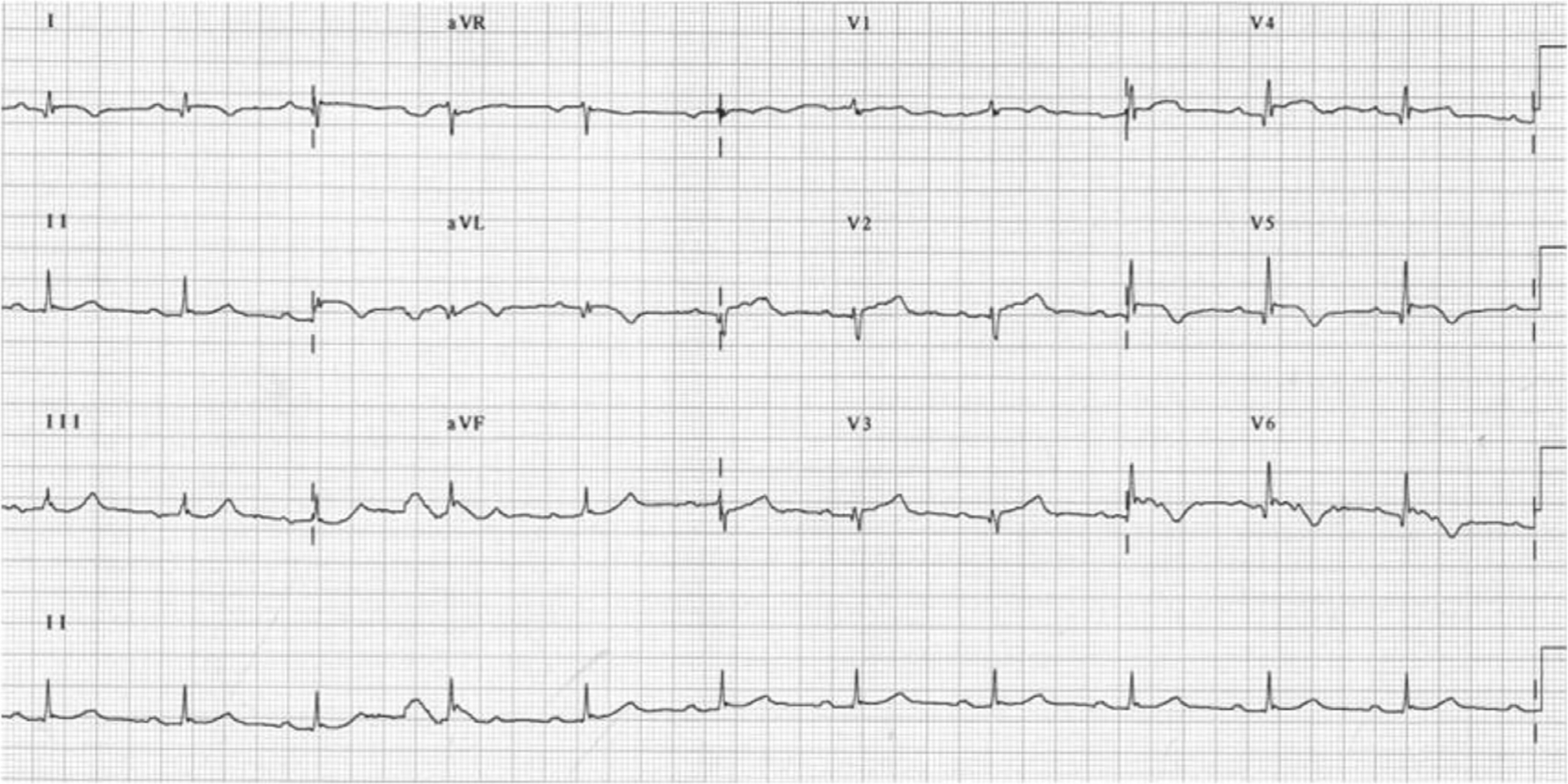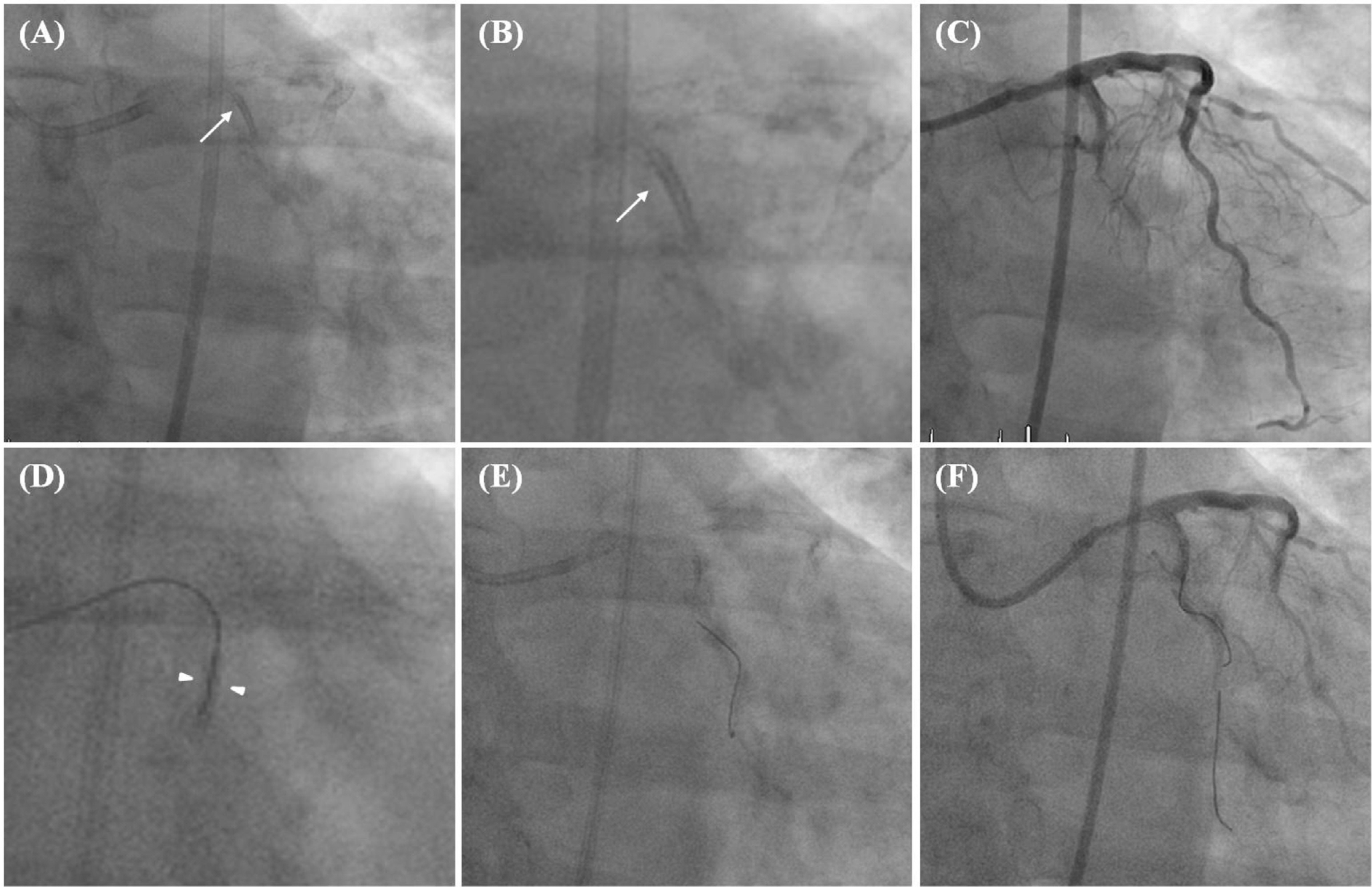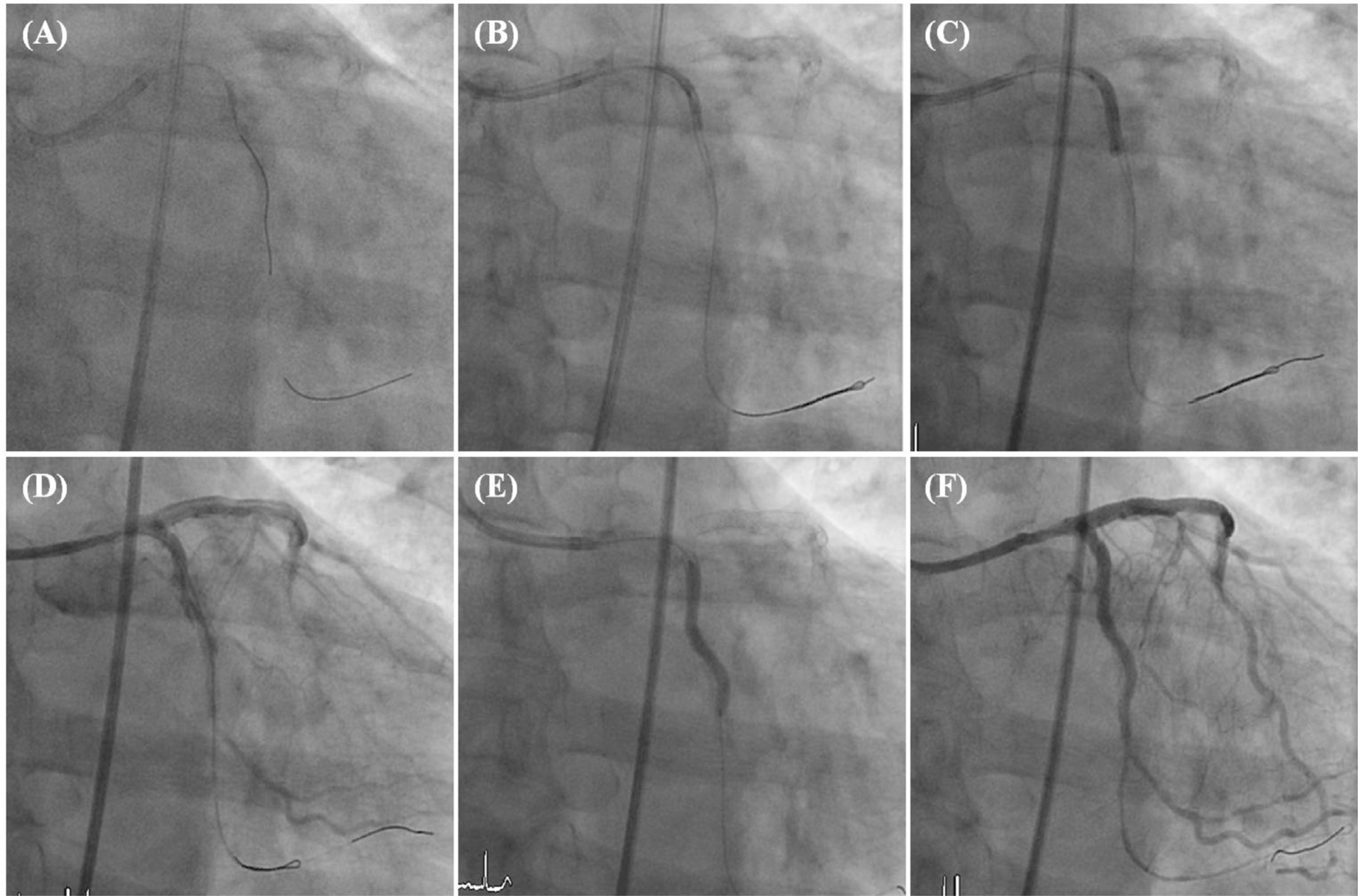Kosin Med J.
2013 Jun;28(1):55-60. 10.7180/kmj.2013.28.1.55.
Treatment of Stent Dislodgement Complicated by Coronary Artery Dissection using Parallel Wire Technique and Small Balloon
- Affiliations
-
- 1Department of Internal Medicine, College of Medicine, Dong-A University, Busan, Korea. thinkmed@dau.ac.kr
- KMID: 2308512
- DOI: http://doi.org/10.7180/kmj.2013.28.1.55
Abstract
- Stent dislodgement is a rare complication of complex percutaneous coronary artery intervention and is often associated with significant morbidity. We report a case of stent dislodgement complicated by coronary artery dissection and acute total occlusion of left circumflex coronary artery. Direct expansion of the dislodged stent was performed using parallel wire technique and small balloon. An overlapping stent was implanted for remained coronary artery dissection. Coronary artery flow was restored and ST segment elevation was normalized after successful intervention.
Keyword
MeSH Terms
Figure
Reference
-
1.Bolte J., Neumann U., Pfafferott C., Vogt A., Engel HJ., Mehmel HC, et al. Incidence, management, and outcome of stent loss during intracoronary stenting. Am J Cardiol. 2001. 88:565–7.
Article2.Brilakis ES., Best PJ., Elesber AA., Barsness GW., Lennon RJ., Holmes DR Jr, et al. Incidence, retrieval methods, and outcomes of stent loss during percutaneous coronary intervention: a large single-center experience. Catheter Cardiovasc Interv. 2005. 66:333–40.
Article3.Lohavanichbutr K., Webb JG., Carere RG., Solankhi N., Jarochowski M., D'Yachkova Y, et al. Mechanisms, management, and outcome of failure of delivery of coronary stents. Am J Cardiol. 1999. 83:779–81. A9.
Article4.Eggebrecht H., Haude M., von Birgelen C., Oldenburg O., Baumgart D., Herrmann J, et al. Nonsurgical retrieval of embolized coronary stents. Catheter Cardiovasc Interv. 2000. 51:432–40.
Article5.Shim BJ., Lee JM., Lee SJ., Kim SS., Lee DH., Shin WS, et al. Three cases of non-surgical treatment of stent loss during percutaneous coronary intervention. Korean Circ J. 2010. 40:530–5.
Article6.Lee HY., Kim BH., Yoo WS., Yun SU., Kang MH., Kang TS, et al. Successful removal of a dislodged stent using a gooseneck snare. Korean J Med. 2008. 75:S843–7.7.Hussain F. The parallel wire technique to deal with wire-induced dissection of a complex calcified lesion. J Invasive Cardiol. 2007. 19:E60–2.8.Uyan C., Gündüz H., Arinc H., Akdemir R. Embolised stent into the circumflex coronary artery during percutaneous coronary intervention. Int Heart J. 2006. 47:125–9.
Article
- Full Text Links
- Actions
-
Cited
- CITED
-
- Close
- Share
- Similar articles
-
- Two dislodged and crushed coronary stents: treatment of two simultaneously dislodged stents using crushing techniques
- Successful coronary stent retrieval from the ascending aorta using a gooseneck snare kit
- Aspiration Thromboembolectomy in the Management of Acute Coronary Occlusion during Pertaneous Transluminal Coronary Angioplasty
- Retrieval of a dislodged and dismounted coronary stent; using a rendezvous and snare technique at the brachial artery level via femoral approach
- Recanalization of an Accidentally Crushed Coronary Stent by Intravascular Ultrasonography Catheter Entrapment




